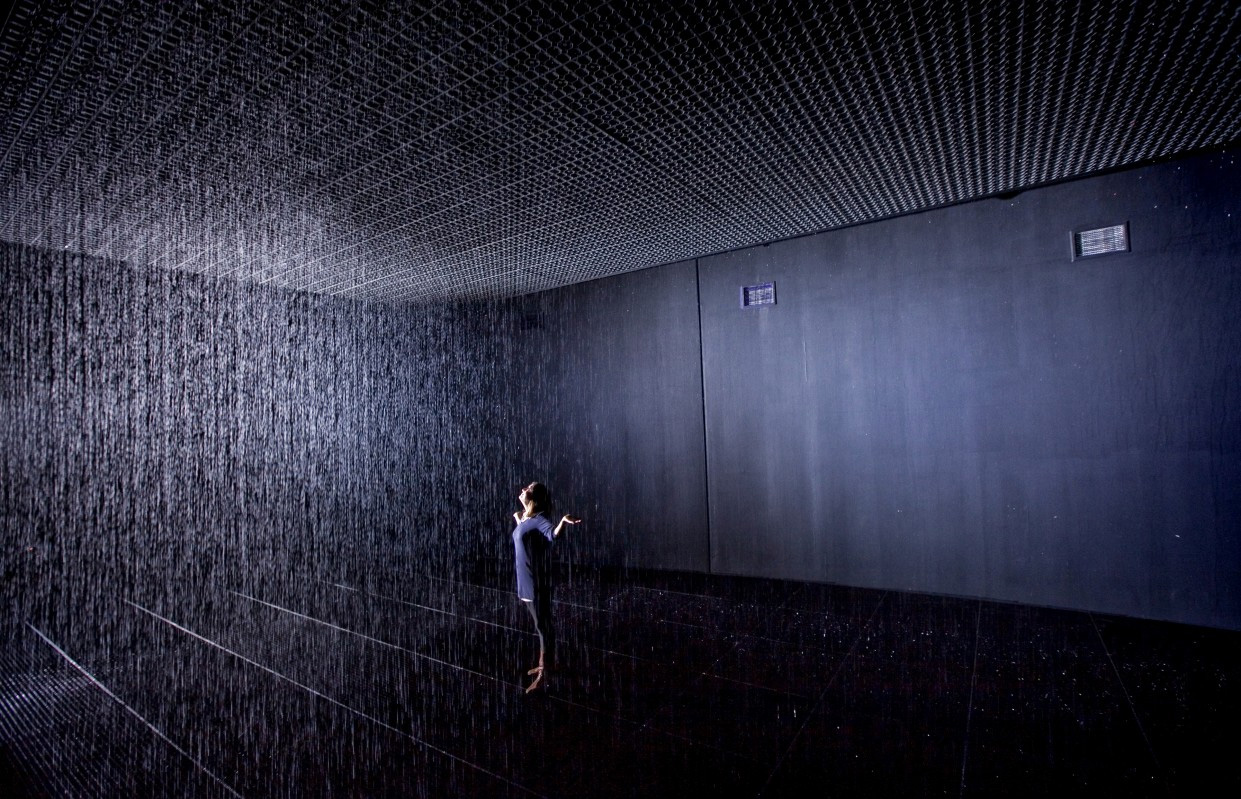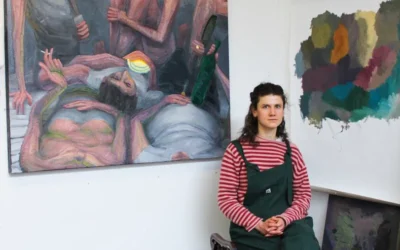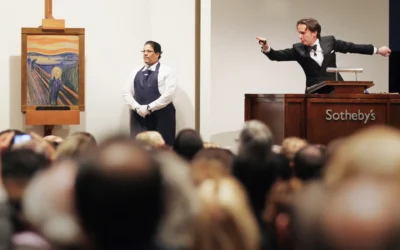By William Fairbrother.
Time elapses and the proliferation of interactive art accelerates. Unlike other types of artwork, this species depends on human interaction to come alive. Its emergence has gone in tandem with the Information Age, a period characterised by computation. Every age is reflected in its own art and this short article will explore the reasons for the emergence and popularity of Interactive Art in the Information Age.
With its association to the Information Age, interactive art is often typified by digital, screen-based artwork. However, its origins can debatably be said to stem from the analogue work of Parrhasius during the 5th century, when Zeuxis tried to unveil a curtain he had painted. This reminds us not to judge interactive art by the implementation of a technologies, but by an artist’s ability to create a social situation that encourages interaction from an audience, and the quality of that experience. Throughout the history of interactive art lies the human urge to reach out and augment our environments. Despite this tendency, interactive art was only properly recognised during the late 1990s. Since this time, computers have been assimilated into our lives, and the touchscreen has become an object we are accustomed to using on a daily basis. Just as Zeuxis reached out to the curtain, it has become normal to poke a screen in anticipation of a reaction. We have entered an era of gesture-based interaction with surfaces, and this behaviour between humans and objects has been carried from society into the gallery space.
As well as society’s contribution, artists have also encouraged interactive behaviours in the gallery space. Between 1959-61, Roy Ascott produced ‘Change Paintings’ which allowed viewers to re-order a series of Plexiglas slabs to create new images. The artist became a facilitator for an emergent artwork produced through an interaction between his work and an audience. In this process, he was conscious that interaction and engagement have positive parts to play in the creative process. This work, among others, transformed the audience’s role from spectator to participator. Interactive art is about offering an audience an experience where they are empowered to be part of an event and contribute towards it creatively. The spectator’s interaction is no longer purely psychological, but physiological which affords new ways to navigate and contribute to an artwork. This responds to a shift in attention from art as object, to art as experience; away from symbolic representation to an embodied emotional experience. This invites a general public, who are not necessarily educated in art history, to become involved and enjoy the work. Positive reaction to interactive art in galleries has caused it to become increasingly scheduled and exhibited.
Its popularity has encouraged increasing amounts of interactive art to be accommodated by collectors and gallerists into their collections and productions. However, its spatial and ephemeral nature does not make it an easy art to store and monetise. The production of this work is therefore mobilised through alternative routes that lie outside the traditional art market. Computer technology characterises the Information Age and it enables the real-time processing that is useful in interactive art. Companies behind this technology offer artists the opportunity to test it to its creative limits as mean of flexing their muscles toward competitors. This maintains a relationship between artists and technologists that has always been strong; such as Andy Warhol’s collaboration with Commodore Amiga in the mid-1980s. As technology becomes increasingly complex, cooperation between various specialist individuals is required to realise challenging art projects, giving rise to collectives comprised of artists, engineers, and scientists such as rAndom International and United Visual Artists.
Art has always engineered curiosity and mediations on social realities. Within this space, interactive art has the potential to investigate what ‘interaction’ means in the Information Age. Interactivity is now recognised as a medium in itself, especially in the realm of performance art. Here, the audience is usually confronted with a human performer, whereas in interactive art an audience is confronted with an interactive object. This object is usually equipped with sensors and the ability to augment its environment. These human-like properties cause new types of social behaviour between art and its audience to emerge, and the gallery space becomes a laboratory in which to experiment new forms of social interaction between human and non-human entities. During the 1990s, anthropologist Alfred Gell established a theory regarding Art and Agency. Here an artist was able to delegate a secondary agency to his artwork allowing it to mediate between him and his audience. However, with interactive art, the art has an increasingly primary agent, becoming a semi-intelligent actor in the gallery space. This mirrors the relationship between Man and emerging smart technologies outside the gallery. These new forms of communication are non-anthropocentric, ignoring language and etiquette in favour of a primitive, physical, exploration between sensing bodies. Interactive art enables these new social models to be explored and indicate that as our relationship with the machine increases, interactive art is only to become more popular in our lives.



